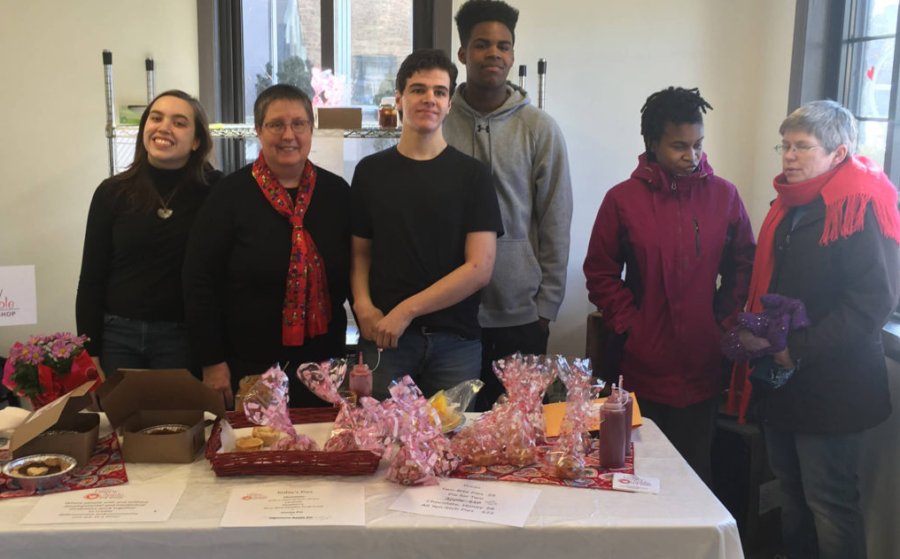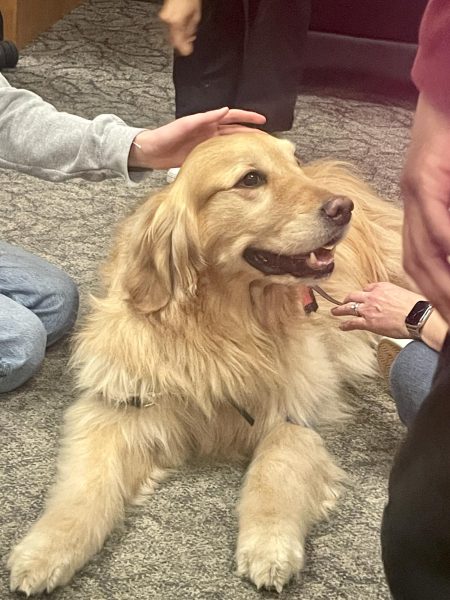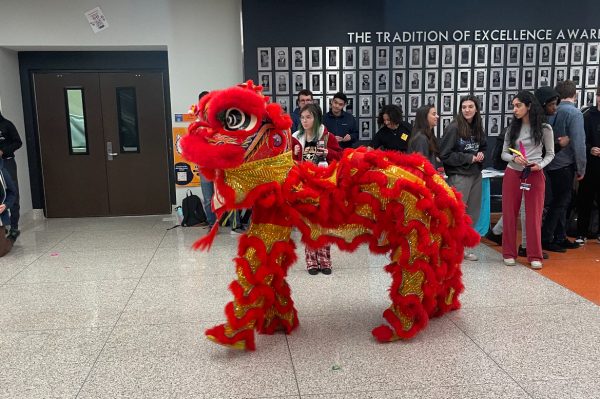All smiles at Happy Apple Pie Shop
March 24, 2017
There is no such thing as invisibility in the Happy Apple Pie Shop. As soon as anyone walks in, the smells of freshly-baked pie meet the customer at the door. Peering in, the wheelchair-friendly kitchen opens up as the friendly chaos is met. Waiting for a pie to finish baking, a steady stream of people walk in and out of the shop and are met by the counter like the customer and employee have known each other for years. Several people dressed in white aprons work in the kitchen on the pie that will soon be ready for the customers to take home. The woman working at the cash register asks you to excuse the crust, as it was made by one of the more “creative” helpers.
The recent completement and opening of the Happy Apple Pie Shop occurred in the Fall of 2016. It is located in the Art District in Oak Park on 226 Garfield Street. The shop is owned by Michelle Mascaro and Corynne Romine. Romine teaches special education in a Chicago Elementary School Michelle had “always been in the helping professions” and felt that starting a business that hires people with disabilities was a natural step forward in her career. Rephrase re free to run with…
“There is a role for everyone who wants to work here,” said Mascaro. By everyone, this especially includes people who have developmental and intellectual disabilities.
One such worker is Katrina Jefferies, a senior at OPRF. She worked at the Happy Apple Pie Shop for the first time at the beginning of March. “We peeled the apples then cut them, after that we blend in the butter and flour,” said Jefferies. All the work they do can be seen as soon as customers walk into the shop.
Romine and Mascaro’s daughter, Emma, has an intellectual disability. Mascaro said the pie shop was opened out of necessity. She said people like her daughter need to have options for jobs, and Romine and Mascaro saw the lack of opportunity she had and decided to do something about it.
A couple of years ago, a “sheltered workshop model” was developed as a place for people with disabilities to work. Even though Mascaro saw this as an improvement, she saw how this work separated the workers from the rest of the community because they only worked with people who had disabilities too.
Mascaro then discovered a solution: “a blended work environment, where people with and without developmental and intellectual disabilities work together.”
This “blended” work environment has had a positive impact on not only the community, but also the students in the TEAM program at OPRF.
Although Katrina has only worked in the shop one time so far, she sees herself working there consistently after she graduates. “It is now my favorite thing to do with my friends,” said Jefferies.


